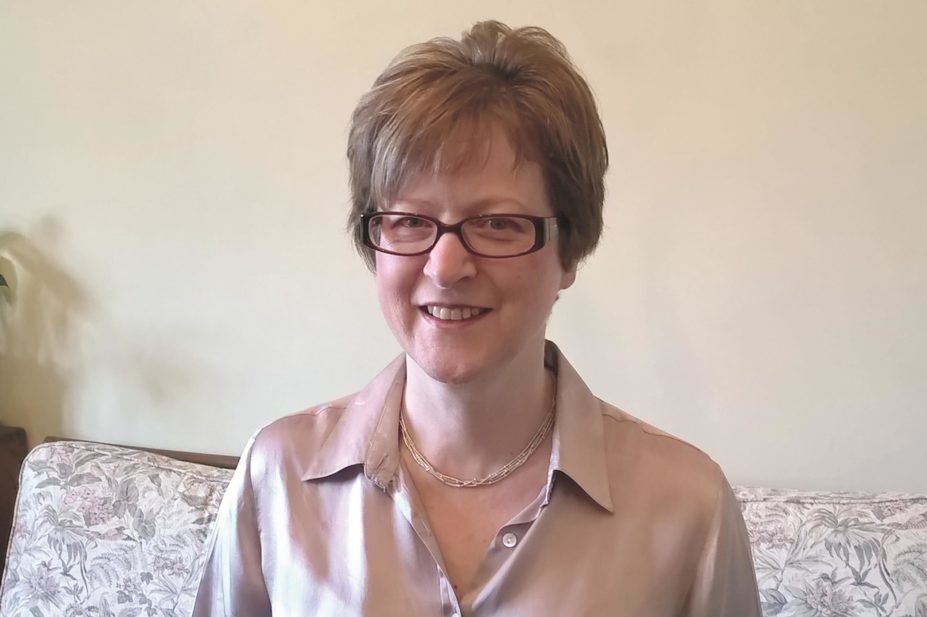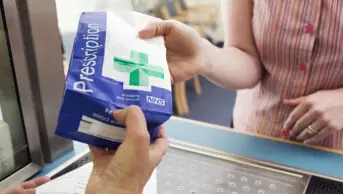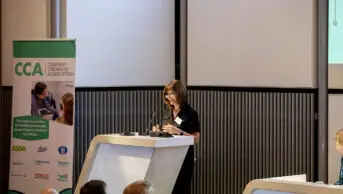
Carmel Copeland
Carmel Copeland is the senior clinical pharmacist for care homes at Northumbria Healthcare NHS Trust (NHCT).
How did you get into your current role?
I have a mixed bag of experience, having worked in community pharmacy for the first five years of my career. Then, following a short career break to have my family, I worked in a specialist forensic and learning disabilities hospital before moving to NHCT to work in a district general hospital setting. Here, I worked as a senior clinical pharmacist for surgery with a particular interest in orthopaedics. I completed my independent prescriber training in 2008 under the mentorship of an orthogeriatrician and much of my work included medication reviews for patients admitted following a fall at home.
When the opportunity came up to use the same skills to reduce risk of harm by doing proactive medication reviews I jumped at the chance. There had been a buzz at work about the Shine project in care homes, which took place from 2013 to 2014 and demonstrated that pharmacy-led medication reviews can reduce hospital admissions. The project gained local, national and international recognition and led directly to funding to carry on as a permanent service from Northumberland Clinical Commissioning Group in April 2015.
I have been in my post as senior clinical pharmacist of care homes since September 2015, although the permanent service was introduced incrementally in June 2015. There is funding for a pharmacy technician who provide extra support to care homes by giving advice and guidance on best practice to optimise medicines ordering systems and reduce waste.
What does your role involve?
My starting point is to meet GPs to introduce the service to them. I then go to meet the staff at the care homes to introduce myself and explain what I will be doing. The GP practices have welcomed me and are appreciative of the idea of targeted medication reviews by a pharmacist.
It is a bit like being a detective, painting a detailed picture of the patient through all the information I have gathered.
Using the GP computer system I obtain a list of patients at the care home and use primary care records to see which medicines they are taking, the indication and how long they have been taking them. Then I talk to the nurse at the care home to discuss any problems that residents are having with any of their medicines. This could be someone having difficulties in swallowing or may involve deprescribing certain drugs that have no current indication.
It is a bit like being a detective, painting a detailed picture of the patient through all the information I have gathered so that before the meeting with the patient and or relative, a lot of preparatory work has already been done.
One of the priorities of the service is to involve patients and their representatives in shared decision making whenever possible. At the review, a nurse, the GP and the patient’s relative may be present, but usually it is myself and the resident with a family member.
Some relatives would rather have a chat with me over the telephone and not come to the review meeting itself; others want a written summary of decisions. I try to be flexible and keep them as involved as they want to be.
Can you provide examples of where a review provided a positive change to the quality of life of a care home resident?
I had one patient who was referred to a urologist in 2010 with urinary frequency. The urologist prescribed finasteride and advised the GP to stop the existing prescription for bendroflumethiazide and use an alternative medicine for hypertension. The patient was duly changed to amlodipine but, on developing swollen ankles, was started on furosemide. The patient is now fully incontinent. I advised stopping the amlodipine and finasteride, reducing the furosemide from twice a day to once a day, and monitoring ankle swelling and blood pressure. Consequently the medication burden was significantly reduced.
Another resident was taking flavoxate, which had been prescribed to reduce bladder spasms associated with catheter use. Following a review of catheter use by the care home matron she had been managing without a catheter (using continence pads) but the drug had not been stopped. I stopped it and removed it from the GP repeat prescription system.
What are the challenges you have faced so far?
The biggest obstacle to getting medication reviews done is getting the resident’s relative and the nurse to attend the review at the agreed time.
Northumberland is a geographically challenging area because it includes large rural areas, as well as several towns, and the 77 care homes are widely spread from as far as Berwick in the north to Haltwhistle in the west and Seaton Valley in the south.
Setting up the service for each GP and each care home is time consuming. Access to electronic records needs to be set up separately for each GP (39 GP practices) and it is necessary to develop relationships with a large number of people, including practice managers, care home staff and community pharmacists.
What do you aim to achieve in your role in the next 12 months?
I need to demonstrate the benefits of the service by providing quarterly data to the commissioners to show how much shared decision making has been possible and how much prescribing and deprescribing has been achieved. Full data have been requested for one in ten homes to provide assurance that the service is meeting the aims and objectives set out in the service level agreement, which will involve looking at costs before and after an assessment of admission avoidance. Previous work has demonstrated significant cost and administration time savings (£184 saved for each resident and 6.6 hours saved in medication rounds per home during the Shine project).
An exciting development in recent weeks is the agreement for further funding to increase input into the service, and we will be recruiting pharmacists and technicians within the next month.


